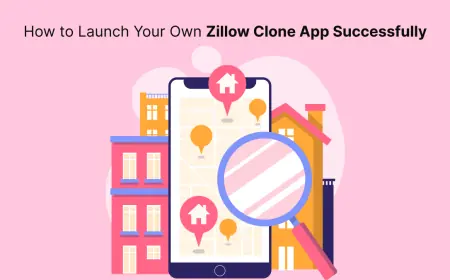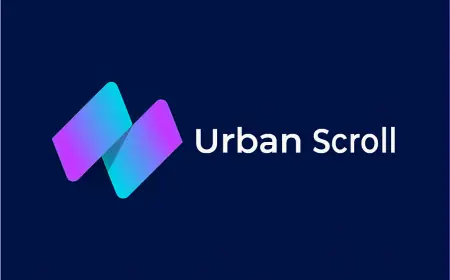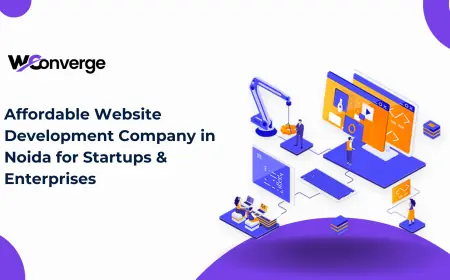Swift vs Kotlin: What Android Developers Can Learn from Apple's Language
Explore what Android developers can learn from Swift in 2025. Compare Kotlin vs Swift in mobile app development, UI, syntax, and architecture.

In the ever-evolving landscape of mobile app development, programming languages shape the foundation of user experiences. For years, Kotlin has been the go-to language for Android developers, while Swift powers the iOS ecosystem. But in 2025, as the lines between platforms blur and cross-platform development rises, it's worth asking: What can Android developers learn from Apple’s language — Swift?
In this blog, we’ll explore the key differences and similarities between Swift and Kotlin, and highlight lessons that Android app developers can extract to refine their own development practices. Whether you're part of a mobile application development company or a solo Android dev, understanding Swift can broaden your perspective and enhance your coding strategies.
Kotlin and Swift: A Quick Overview
-
Kotlin is a statically typed language developed by JetBrains and officially supported by Google for Kotlin app development. It has gained widespread popularity due to its concise syntax, null safety, and full interoperability with Java.
-
Swift, developed by Apple, is the primary language for Swift app development across iOS, macOS, watchOS, and tvOS. Known for being fast, safe, and expressive, Swift replaced Objective-C as the dominant language in Apple’s ecosystem.
Despite catering to different platforms, both languages were designed with developer productivity and modern programming paradigms in mind.
1. Conciseness and Readability
Kotlin and Swift both focus on reducing boilerplate code — but Swift takes it a step further with a more "natural" syntax. Swift's emphasis on readability makes onboarding easier for beginners, and it's a philosophy Android developers can learn from.
Example:
versus Kotlin:
They look almost identical — but Swift avoids overusing symbols and favors clean formatting.
Lesson: Strive for clarity. Even in Android app development, clean code enhances long-term maintainability and onboarding.
2. Optionals and Null Safety
Null safety is a common pain point in programming, and both languages tackle it smartly. While Kotlin uses ? and safe calls (?.), Swift uses Optional types and if let or guard let for unwrapping.
Both are excellent, but Swift’s approach enforces more clarity when handling null values.
Lesson for Kotlin devs: Embrace explicit unwrapping for improved safety and readability.
3. Swift’s Protocol-Oriented Programming (POP)
One of Swift’s most unique strengths is Protocol-Oriented Programming, where protocols (like interfaces) are used more extensively than classes. This encourages composition over inheritance — a principle often underused in Android.
Example in Swift:
In Kotlin, while interfaces exist, inheritance still dominates many codebases.
Lesson: Start thinking in terms of behaviors (protocols/interfaces) rather than rigid class hierarchies.
4. Error Handling: Swift's Do-Try-Catch vs Kotlin’s Try-Catch
Swift introduces a robust do-try-catch syntax for error handling, separating recoverable errors from fatal ones — promoting better error clarity.
Lesson: Even in Kotlin app development, developers can adopt Swift’s mindset of separating error types — especially for networking, I/O, and API calls.
5. SwiftUI and Declarative UI Patterns
SwiftUI revolutionized Apple’s app development by offering a declarative way to build UI — a concept gaining traction in Android with Jetpack Compose.
SwiftUI:
Jetpack Compose:
If you’re a Kotlin developer, exploring SwiftUI can strengthen your understanding of declarative UI paradigms and improve your mobile app development skills overall.
6. Tooling and Ecosystem
While Kotlin integrates deeply with Android Studio, Swift development thrives with Xcode. Swift also offers great performance optimizations with Apple’s hardware, and its static typing system contributes to faster, safer code.
Kotlin’s biggest strength is its interoperability with Java, and wide ecosystem integrations for Android, web (via Kotlin/JS), and native (Kotlin Multiplatform Mobile - KMM).
Lesson: Android developers should keep an eye on KMM and how Swift is being bridged into multi-platform use cases. Frameworks like Flutter and React Native are already enabling Swift usage in hybrid apps.
7. Cross-Learning: Become a Polyglot Mobile Developer
Top mobile app developers today are no longer confined to one platform. Whether you work at a mobile application development company or build products solo, knowing both Swift and Kotlin gives you an edge in cross-platform app development, client requirements, and architecting scalable apps.
-
If you’re fluent in Kotlin, learning Swift opens up iOS contracts.
-
If you’re fluent in Swift, Kotlin unlocks Android’s 80%+ market share.
Lesson: In 2025, mobile devs need to think beyond just one OS. Understanding Swift enhances your versatility — and vice versa.
Final Thoughts
Kotlin and Swift represent the best of modern programming: safety, performance, and developer-friendly syntax. For Android developers, Swift is not just “the iOS language” — it’s a blueprint for clean, expressive, and safe code.
By learning from Swift's principles, Kotlin developers can write better Android apps, especially as mobile application development companies increasingly demand cross-platform fluency. Whether you’re building the next great Android app or expanding into iOS, Swift offers powerful lessons worth learning.
What's Your Reaction?
 Like
0
Like
0
 Dislike
0
Dislike
0
 Love
0
Love
0
 Funny
0
Funny
0
 Angry
0
Angry
0
 Sad
0
Sad
0
 Wow
0
Wow
0

















































